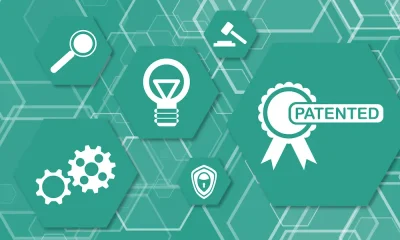Accounting & Finance
Pay Down Business Debt Or Borrow More To Grow?

Businesses continually reevaluate their options; debt management can be a dead weight on an owner’s shoulders.
Is it, not the time to pay down business debt, or should the strategy be to borrow more and focus on growth? There is no one correct answer. Doing both, however, makes sense if you want to stay in business.
Paying down debt will free up extra money to invest in the business.
While it makes sense to pay down debt when interest rates are low. Some also advocate for borrowing when interest rates are low. And when interest rates are historically low – i.e., less than 1% you may hear some investors say the loan it’s almost free.
Invest In The Business
One strategy is to work out where within the business you can spend a dollar to earn three dollars within a shortish timeframe, e.g., 12 months.
Testing new areas to invest with the money you can afford to lose can be an ongoing process, and you avoid the risk of all-or-nothing.
How much do you need to spend or invest in securing three times more revenue?
To work out the equation, access the average value of each client. For example, if a client is worth $3000 to your business – spending up to $1000 to get a new client makes sense.
Understanding the numbers and crunching the data doesn’t come naturally to every business owner. Use the experts to work out the financial health of your operation and your budget for growing sales and acquiring new clients.
How To Pay Down Business Debt
Balancing the investment to grow the business with the need to reduce debt requires a deep dive into what’s happening – i.e., debt analysis.
Where is your business debt?
Acknowledge the existence of your business loans. Some of the loan products may include:
- SBA
- Business LOCs (line of credit)
- Working Capital
- Term
- Equipment financing
- Personal
- Credit cards
Startups are often funded initially using the owner’s finance, which may come from their mortgage or a personal loan.
SMEs and larger businesses can use various loan products, including working capital, invoice factoring, financing, equipment, and merchant cash advances. There are also recourse and non-recourse commercial loans, expediting a business’s growth.
How are you servicing the debt?
Once you know where your debt is, look at the repayments and calculate your DTI (debt to income) ratio or percentage. For example, if your monthly gross profit is 20000 and your total debt repayments are 7200, then your debt is a DTI of 36%.
Gross profit
It also pays to know the gross profit is not your total revenue but what’s left after the cost of sales, i.e., the variable costs associated with the sale.
You may need to pay sales staff commission or pay credit card fees associated with the sales. Also included in the cost of sales are supply chain fees, equipment, and utility costs linked to the production of the product or service.
Budgets
Creating budgets for spending will reduce overspending and unnecessary costs. Have you heard of zero-based budgeting?
Zero-based budgeting
A nifty method to control budget blowout is zero-based budgeting. There is no room for a budget blowout when you use zero-based budgeting, as every expense needs justification and sign-off.
Rather than setting a budget for an area, each quarter or term starts from a zero base, and the expenses for that period are analyzed and approved.
While time-consuming, zero-based budgeting effectively reduces expenses and provides more profit to reduce business debt. See an example here.
Accounting Software Tools
If zero-based budgeting is too time-consuming for you – use online accounting tools to set up budgets and track departmental and company-wide expenses. Cloud-based software can meet your accounting needs including:
- Quickbooks
- Freshbooks
- Xero
- Sage Business Cloud Accounting
- Zoho Books
Get A Better Deal – Negotiate
To pay down your business debt faster, you’ll need to negotiate better terms starting with the interest rate.
Reducing the interest rate while still committing to the same repayment amount will reduce your principal further if your loan is the type that includes paying down principal and interest.
You’ll want to eliminate your credit card debt as soon as possible, as it’s probably the highest interest rate.
Consolidate
Consolidate loans are ideal for bundling debt into one loan with a much lower interest rate. This action allows your business to eliminate high-interest loans, including credit card debt.
Do research to secure the best consolidation loan for your business, and vow never to let expenses and debt get out of control.
Summing Up
Business debt can be reduced while growing the business. More gross profit can reduce debt; therefore, increasing sales and revenue is a priority.
Investing in new products or developing your services can broaden your client base and help you remain relevant with existing customers so they commit to buying more from you.
Always negotiate for a better loan deal and, where possible, consolidate to get a lower interest rate. If your spending and expenses need a tighter overview, use zero-based budgeting to reign in the outgoings.
Are you keen to read more on accounting in business? See this article on forensic accounting.









